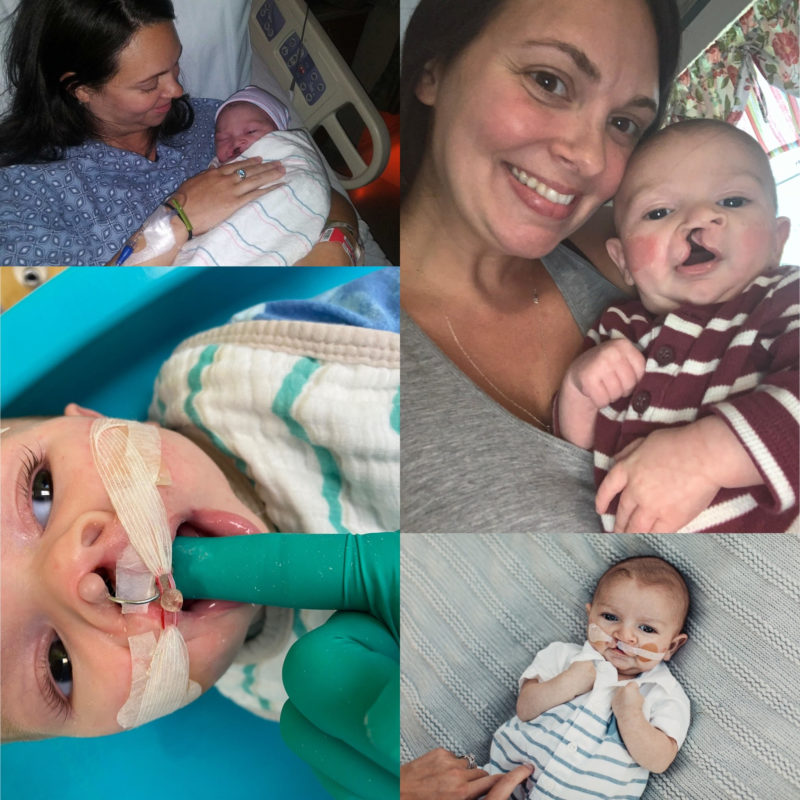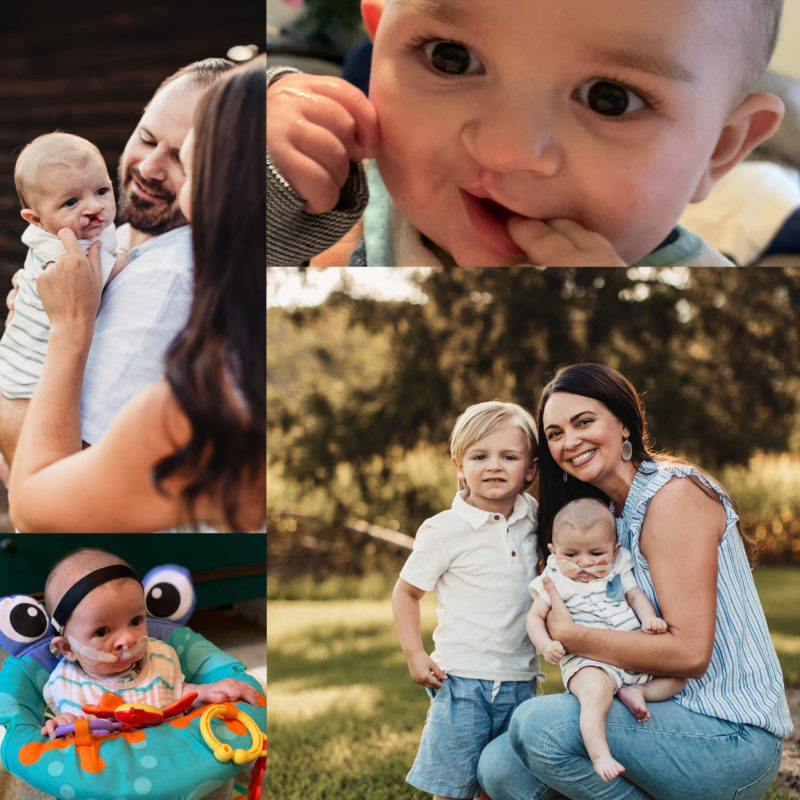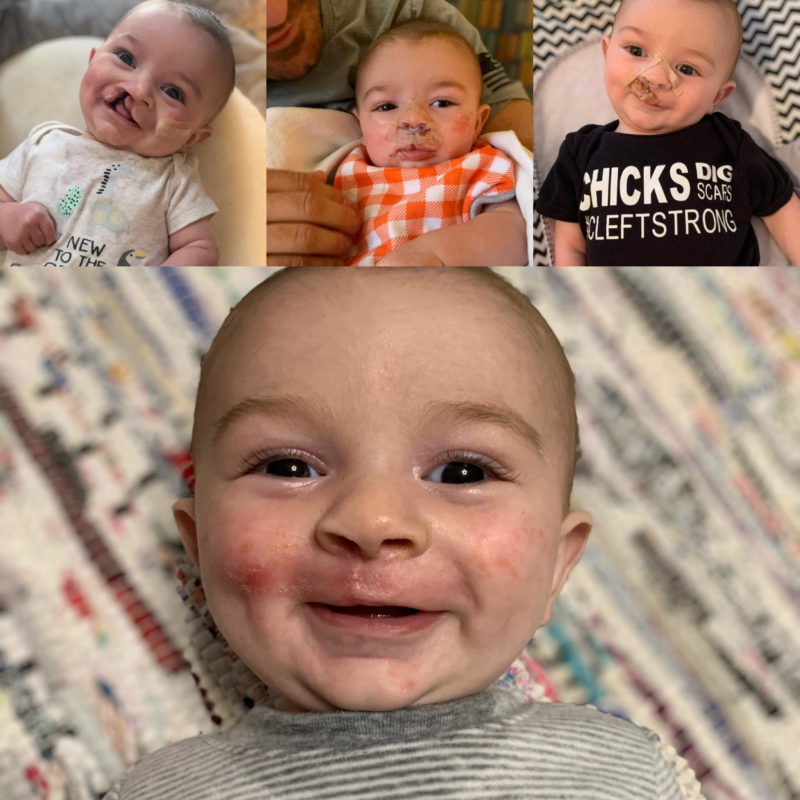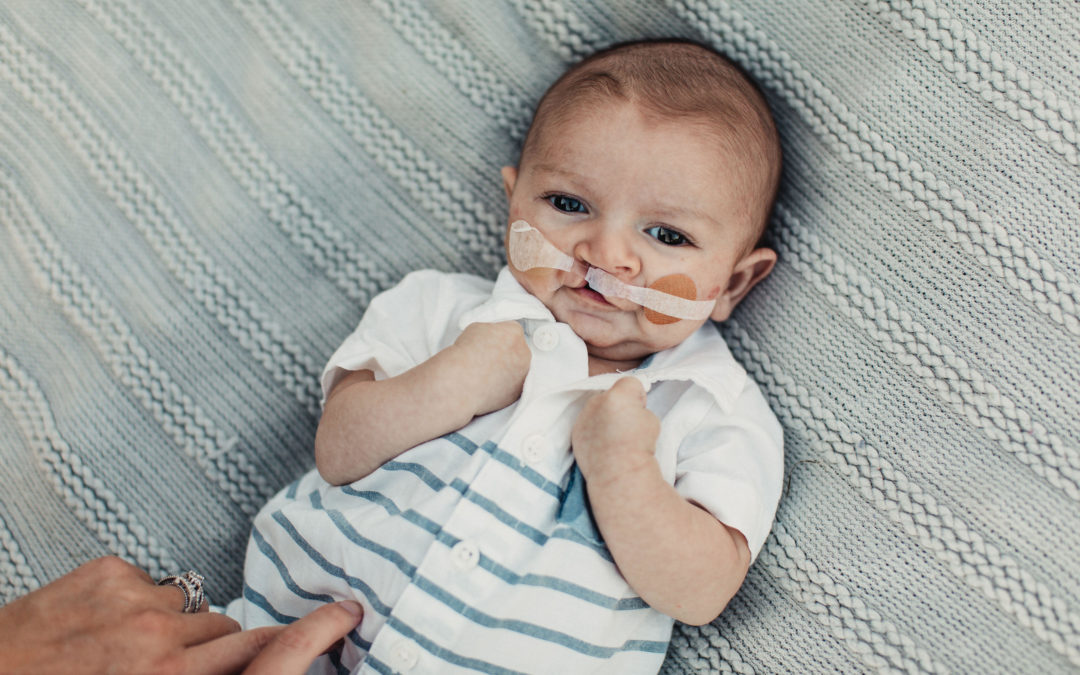By Guest Blogger Suzanne Santomieri
We were twenty minutes into our 19 week ultrasound and something felt wrong. The technician continued to switch back and forth to different views and was talking a lot. I kept thinking how many more details she was giving us than I remembered them sharing during my first pregnancy.
Just that morning my dad was diagnosed with Stage 4 GI cancer. My mind was racing. I had kept the appointment because even though we weren’t finding out the gender, we needed some joy as a family. I never could have imagined that we would receive another devastating blow.
“Everything looks great. However I’m sorry to tell you that I see a cleft lip.”
I think about that moment a lot, now that it’s been almost a year. I think about the tears, the fear, and the confusion. I think about how I immersed myself in research. I think about reading “Jack’s New Smile” to our son, Nicholas, in order to be as factual and real as we could with a then-3 year old. I think about the responses from family and friends, both supportive and sometimes insulting. I think about how many people chalked this birth defect up as an “easy cosmetic fix.” I think about how defensive I became and how quickly I wanted to educate others about this condition. I think about how even though there are 1 in 700 babies diagnosed with cleft lip and palate, it is rarely talked about nor understood. I think about the babies that have at least two major surgeries before their first birthdays and over the course of their lives they can have upwards of 10-20 surgeries. I think about this and gladly share a glimpse of our cleft journey.

Following our 19 week ultrasound, we met a specialist in Winston-Salem who confirmed that our baby had a “significant” cleft lip and palate. Several weeks later, due to Covid-19, my husband was no longer able to go to ultrasounds with me. We had secured a “team” of doctors and did not meet them in person until the baby was born. All appointments with the plastic surgeon team were done through video calls.
I had fallen into a depression that I had never experienced before. As a special education teacher, I have dedicated my entire career to be an advocate and help families through their autism diagnosis and now the roles were reversed and I was relying on other people to help me navigate a world I was not prepared for, while being quarantined, and without support for most of the journey. I felt guilty for the thoughts I was having about what my child would look like and questioned how our family was going to handle the road ahead of us.
Dominick Robert Santomieri was born on June 12, 2020. I wish I could say that all my fears instantly left the second I laid eyes on him. I wish I could say that the guilt went away, too. But it didn’t. Our baby was born with a wide gap in his lip and a 16mm space in his palate. It was, as we were told, very “significant.”
After speaking with other cleft moms, I now know that all of my feelings were “normal.” I also know that it only took one day for me to stop seeing that gap and start seeing my beautiful baby boy.

I attempted to breastfeed him, but as I had expected, he was unable to form his mouth to latch. I would quickly become an “exclusive pumping” mama. I mourned this quietly, worrying that our connection and bond would not be what I had with our first son. I also knew that cleft babies have a very difficult time feeding in general and I prayed hard that the Dr. Brown’s Speciality Feeders would work for him. Luckily, he quickly lived up to his namesake (my grandfather and dad), and he was able to adapt and eat without issues.
Dominick was monitored closely and a few hours after delivery was taken for his hearing test. I cried a lot when he was gone. I cried more when he returned and we were told he failed his newborn hearing screening. He failed a second one before we left the hospital and in the pit of my stomach I knew something was wrong.
The cleft team came in and took measurements of his palate. We met our surgeon, Dr. Runyan, and some members of the team. He talked to us about NAM, Nasoalveolar Molding, which is a nonsurgical way to reshape the gums, lip and nostrils with a plastic plate before cleft lip and palate surgery. This process would entail weekly trips to a pediatric dentist who specialized in NAM for adjustments, daily taping, and dedication for the 3-4 months leading up to his first surgery. This option is not accessible to many families and we were lucky to have a dentist locally to assist us in this process. My husband and I knew that if we wanted to give him a successful first year of life, we would need to do whatever it took.
We left the hospital with follow ups scheduled with the plastic surgeon, the pediatric dentist, Dr. Kate Lambert, an audiologist for further hearing testing, and a speech therapist. We were merely two days in and already had a small glimpse of what our little man’s future entailed.
Dominick has since been diagnosed with a mild hearing loss. He wore a device called a Cochlear Baha softband, which allowed sound to be amplified in order for him to access and maximize noise around him. He had weekly trips to Dr. Kate and endured adjustments and taping on his cheeks 24/7. His palate went from being 16mm wide to 5-6 mm wide the week before his first surgery. He got his new smile on October 2, 2020. He will have his palate repair in the spring of 2021. He may need Palatal expansion when he is 5-7 years old, followed up by Alveolar bone graft and fistula repair between 6-9 years old. He will need orthodontic care for all of his life because permanent teeth commonly erupt in abnormal positions and some could be missing entirely. He may need jaw surgery around age 14 due to underdevelopment of the upper jaw. Finally, he may need cleft rhinoplasty in his late teens, once he has reached skeletal maturity.
Dominick will endure more in his first few years than most do in their lifetime.
He won’t remember the taping, the anesthesia, the surgeries, the pain, or the time he spent in these early years being shuffled between specialists. He won’t remember looking “different,” even though we took pictures and documented every inch of his gapped smile so he would know how far he’s come. He won’t remember how much I mourned that smile and the tears I cried everyday for weeks, when it was actually gone. But he will always know that even though it’s been “fixed,” his smile was imperfectly perfect all along. He’ll be brave because that’s all he will know how to be. He’ll be strong because he’s #cleftstrong and he has thousands of others supporting him and enduring the same fight he is each and every day.

To learn more about Dominick’s Smile or have questions related to the cleft and palate journey, please check out sedg1213.wordpress.com.
Read related blogs on TMoM here.
Want to see more blogs like this and get notifications on local events and happenings? Subscribe to our free weekly newsletters here.

















He is perfect and so beautiful! Thank you for sharing your story and educating others on this topic, and I’m so glad everything worked out for Dominick and your family. Congrats on your second child!